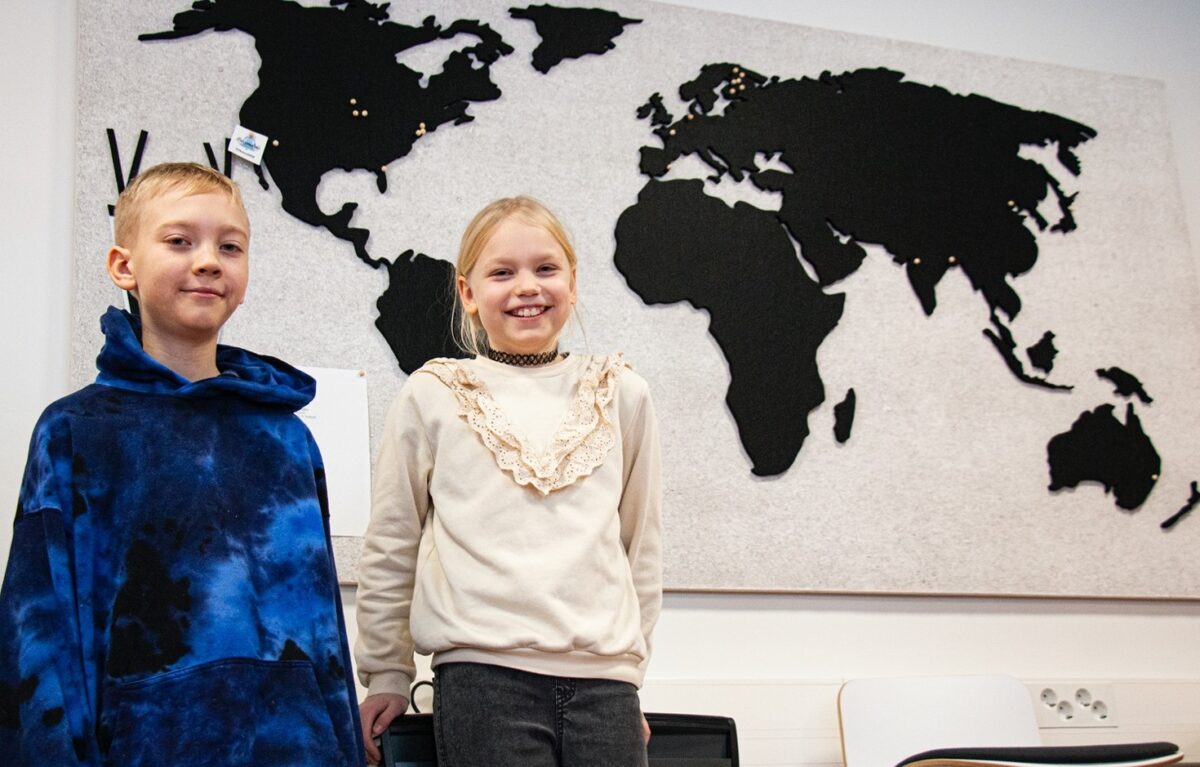In Liminka, it is possible to complete all basic studies under English-language instruction. Expanded bilingual education is organised in grades 1−6 of Ojanperä School and English-enriched bilingual education in grades 7−9 of Liminganlahti School. Mathematics-oriented education is organised in Tupos School, starting from the 7th grade.
In basic education, in addition to the language of instruction (Finnish/Swedish), also another language can be used as a target language if it doesn’t endanger the pupils’ opportunity to follow teaching (Basic Education Act, section 10). English-enriched education is free of charge for the student.
In Liminka municipality, bilingual education is available with English as the target language. The education is based on CLIL (Content and Language Integrated Learning) pedagogy, wherein the contents of different subjects are studied in a foreign language. In this method, teaching in the pupils’ native language and in a foreign language form a whole.
In Liminka, Ojanperä School arranges extensive bilingual education in grades 1−6. It provides a natural continuum from pre-primary education, that is either English-immersive or English-enriched, to extensive bilingual education with English as the target language. After 6th grade, one can continue from Ojanperä School to the English-enriched education in grades 7−9 of Liminganlahti School.

The enrollment area for basic education’s English-enriched education and the extensive bilingual education is the whole municipality. The transportation that may be needed for a pupil outside Ojanperä and Liminganlahti Schools’ enrollment area is arranged by the guardian.
More concise bilingual education or language-enriched education, is a form of bilingual education. In language-enriched education less than 25% of the contents of subjects are taught in a language other than the day care centre’s or school’s language of instruction.
In Liminka, language-enriched education is given in English in the day care centres of Linnukka, Ojanperä, Aapi and Tupos, as well as in the lower secondary school of Liminganlahti. The English-enriched pre-primary and lower secondary education is applied for. A pupil can take part in English-enriched education if it is assessed that the selection does not risk the pupil’s ability to follow teaching. When selecting pupils for the English-enriched education, pupil’s motivation and ability to manage bilingual education are considered.
In Ojanperä School’s grades 1−2, about 50% of weekly lessons are in English. The amount of English-language instruction decreases in such a way that in grades 5 and 6 it covers about 30% of weekly lessons and is divided evenly across the subjects, apart from Finnish language and literature.
One can apply to Ojanperä School via aptitude tests from the English-enriched groups of pre-primary education. In bilingual education, optional lessons in grades 5 and 6 of primary school are used for studying the subjects through English (1 weekly lesson per year +2 weekly lessons per year).
In Liminka Upper Secondary School it is also possible to study under bilingual education. In such a case, ca. 25% of obligatory courses are taught and studied in English. Textbooks are in Finnish, but teaching and extra materials are mainly in English. Bilingual education is applied for via joint application as a separate study program in Studyinfo (Opintopolku). The program has an aptitude test that determines adequate skill level with respect to native language and the ability to study in English. Liminka Upper Secondary School’s bilingual education is in cooperation with the University of Oulu and the Oulu University of Applied Sciences.
In Liminka, there are few children and pupils whose native language is other than Finnish. Schools work in cooperation so that children and pupils from different linguistic and cultural backgrounds can be arranged native-language education. Native-language education is arranged when there are four children/pupils from the same language community. The education is arranged either as distance learning or the pupils and/or teacher go to another school for the native-language lessons. Native-language education is based on its own curriculum.
Domestic internationality is developed by taking into consideration the linguistic and cultural communities that are represented in the day care centres and schools. The operational culture of the day care centres and schools entails observing the holidays of these linguistic and cultural communities, learning about their customs and traditions, as well as amending teaching with content related to these cultures, such as cultural history and traditional skills.
